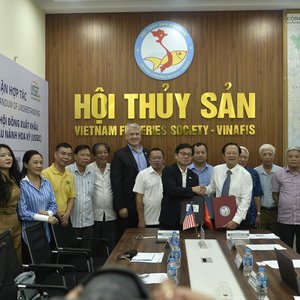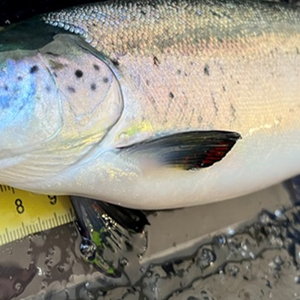Unlocking European aquaculture's full potential
The European Union has in place high standards to keep sustainable growth at the heart of aquaculture's approach and methods, with world-class research and technological development. Yet this progress in excellence
has not been reflected in production, which has levelled off in the EU, while there has been strong growth in some other parts of the world. The E.U. Commission has announced that it is setting out to address this state
of affairs and give fresh impetus to sustainable growth in the EU's aquaculture sector. The aim is not to create new legislation specifically for aquaculture, but to give a strong political impetus to its development.
“Aquaculture has a bright future ahead of it in providing Europe's discerning consumers with high-quality, healthy fish products. However, today its potential is far from being fully realized. It is time for it to get its full share
and to give this strategically important sector an equal voice, and – quite literally – the place it needs to develop,” Joe Borg, E.U. Commissioner for Maritime Affairs and Fisheries, commented.
The Commission is examining the root causes of the stagnation in EU aquaculture production and looking at ways to improve the sector's competitiveness, sustainability and governance.
Firstly, the Commission said, the sector can become more competitive through ongoing strong support for research and technological development, improved planning of space in coastal areas and river basins to make it easier for the sector to compete for space and water, and inclusion of its specific needs in the EU's market policy for fisheries products.
Secondly, it will remain sustainable if it continues to build on environmentally friendly production methods, maintains high animal health and welfare standards and delivers a high level of consumer protection.
Thirdly, more can be done to enhance the sector's image and its governance-related aspects. Aquaculture's success will depend to a large extend on there being a business-friendly environment for the sector at national
and/or local level. Hence the Commission's willingness to provide Member States and regional authorities with guidance to ensure that targeted measures at local, national and EU level help the sector make full use of its
assets.
The Commission believes that a strong, reinvigorated aquaculture industry would serve as a catalyst for growth in related sectors and further contribute to the development of rural and coastal areas. Moreover,
consumers would benefit in the form of healthy, high-quality food products produced in an environmentally friendly way. These are just some of the crucial benefits that would accrue from concerted European action at all
levels to unlock the aquaculture sector's full potential.
All these goals should be achieved by EU, national and regional bodies taking measures that fall within their responsibility.
EU aquaculture: facts and figures
EU aquaculture produces around 1.3 million tonnes per year. This represents 18 percent of the EU production of fisheries products (2005 figures).
The main aquaculture species in terms of volume are blue mussel (361 000 tonnes), rainbow trout (203 000 tonnes), salmon (145 000 tonnes), cupped oyster (127 000 tonnes) and Mediterranean mussel (109 000
tonnes).
By volume, the main producers are France (258 000 tonnes), Spain (222 000 tonnes), Italy (181 000 tonnes), UK (173 000 tonnes) and Greece (106 000 tonnes).
By value, the main producers are France (555 million euro), UK (498 million euro), Italy (476 million euro), Greece (345 million euro) and Spain (280 million euro).
The EU imports a wide variety of aquaculture species and products. The main ones are:
- salmon from Norway
- shrimp from the South East Asia and South America
- fresh water fish such as pangasius and tilapia, primarily from South East Asia.
Fish/seafood farmed where in the EU:
- Oysters: the production is largely dominated by France. There is also production in other Member States, for instance Ireland.
- Mussels: the top producers are Spain, Italy, the Netherlands and France.
- Clams: the production is dominated by Italy; there is also production in Spain and Portugal and a few other Member States.
- Trout: almost every Member State has trout farms. The main producers are Italy and France, followed by Denmark, Germany and Spain.
- Carp: the main areas for EU production are in Central Europe. The Czech Republic, Poland, Hungary and Germany are the biggest producers.
- Eel: main producers are the Netherlands, Denmark and Italy.
- Atlantic salmon: the main EU producers are the UK (Scotland) and Ireland.
- Sea bass and sea bream: the main producer is Greece. There is also production in Spain, France and Italy.
Direct employment in the aquaculture sector is approximately 65 000 full-time jobs. The vast majority of enterprises are small and medium-sized companies.
Opportunities and challenges faced by the aquaculture industry:
The European aquaculture sector has access to dynamic and cutting-edge research and technologies, advanced equipment and fish feed. Thanks to the EU's high environmental and health protection standards, EU
aquaculture products respect environmental protection requirements, meet high quality demands and are traceable. While these high standards put EU aquaculture at the forefront of sustainable development in the
world, both in terms of social and environmental impacts, they make it more difficult to compete price-wise with third-country producers (e.g. in Asia and in South America).
Competition with imported products is therefore an important challenge. But the sector faces a number of other challenges as well. Competition for space and access to water in coastal areas and river basins are
important obstacles to setting up, developing or even maintaining aquaculture production sites. Entrepreneurs have difficulty gaining access to finance and investment. Moreover, the sector remains relatively unknown to
investors, public authorities and the general public, and this has an impact on its image and governance.










